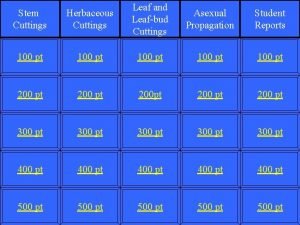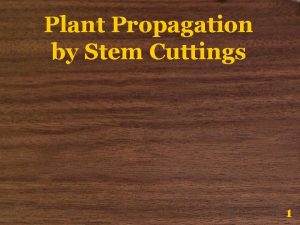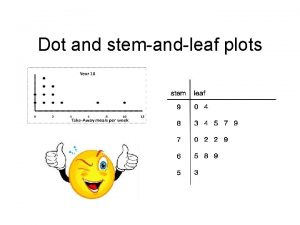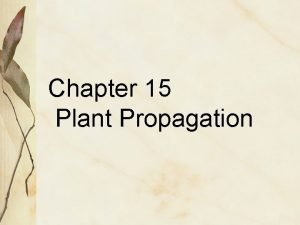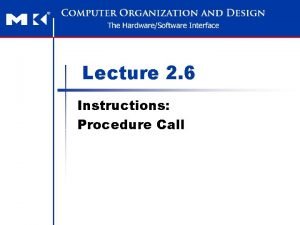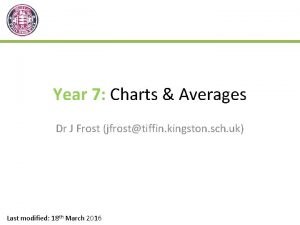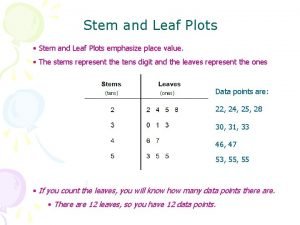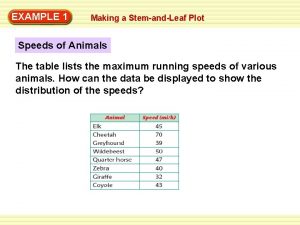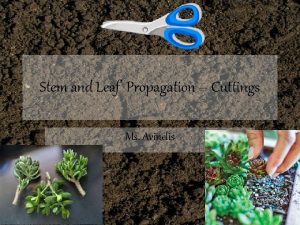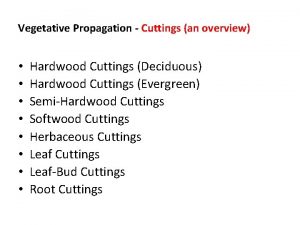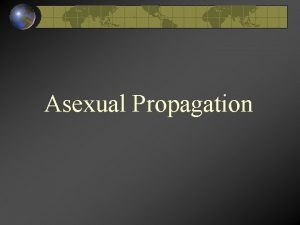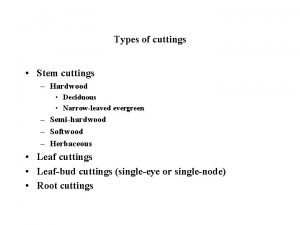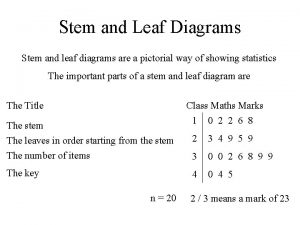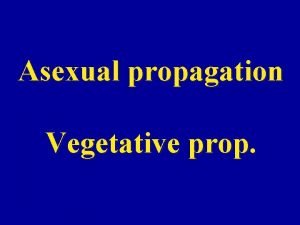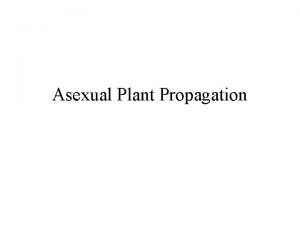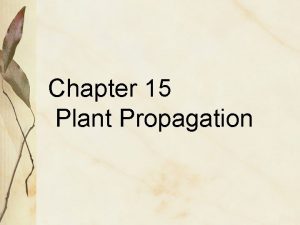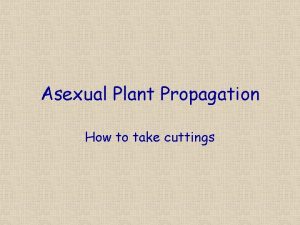Stem and Leaf Propagation Cuttings Asexual Propagation Asexual
















- Slides: 16

Stem and Leaf Propagation – Cuttings

Asexual Propagation • Asexual propagation is the reproduction of new plants from stems, leaves, or roots of a parent plant. • Portions of parent plants are used to make new plants.

Benefits of Asexual Propagation – Asexual propagation allows one to: • produce more plants faster. • propagate plants that do not produce viable seeds. • produce plants that are identical to the parent plant. • A plant that is identical to the parent plant is known as a clone.

Stem Cuttings • When you cut off a portion of the stem on the parent plant and place it into a growing media. • One stem can be made into multiple pieces. 4 new plants

Leaf Cuttings • Consists of a leaf blade or leaf blade with petiole attached. • In the case of the leaf blade, the primary veins are cut and the blade is laid flat on top of the growing media. • The leaf is pinned down, new plants will form at the point where the veins were cut.

Good Growing Media • • Compost Soil Bark Humus Sphagnum Moss Sawdust Rice Hulls Sand • • Perlite Vermiculite Peat Moss Coconut Coir Fibers Worm Castings Lime Gypsum


Good Growing Mixes • Peat moss and perlite mixture - good moisture retention, yet provides good aeration. • Vermiculite - good moisture retention. • Sand - provides good aeration and drainage. • Sand peat moss mixture - good mix of moisture retention and aeration.

Making Cuttings • Make cutting 1 -3 inches long. • ¼ Inch below a leaf, bud, or side shoot. • Remove any blooms on cutting.

Making Cuttings • Place cutting in a sanitizing water/bleach solution immediately after taking cutting. • Be sure to remember which is the top of the cutting. – If you bury the top of the cutting, the cutting won’t root.

Caring For Cuttings Cont. • Cut bottom at a 45° angle. – allows more surface area to contact media for water absorption.

Preparing Container • Fill plug tray with sterilized medium. • Use a dibble to dibble holes in the media for easy insertion of cutting.

Treating Cuttings • Strip cuttings lower leaves. – will prevent the cutting from rooting. • Dip cutting in rooting hormone. – chemicals which help cuttings grow more quickly and grow a larger number of roots.

Inserting Cuttings • Place dipped cutting in dibbled hole. • Gently press media around cutting. • Label cutting with name and variety, include name of rooting hormone used.

Rooting Of Cuttings • Check for roots by pulling out cutting. – Immature root system= roots don’t hold soil, so soil crumbles in hand. – Root bound= roots coiled tightly around soil.

Rooting Of Cuttings – *Mature root system= roots hold soil, so soil doesn’t crumble in hand. • *Ideal and ready to transplant. • Growth on the tips or sides is normal, but does not indicate root growth.
 Stem and leaf cuttings
Stem and leaf cuttings Cutting plants meaning
Cutting plants meaning Dot
Dot Double sided stem and leaf plot
Double sided stem and leaf plot Stem cutting
Stem cutting Maple leaf and oak leaf homologous
Maple leaf and oak leaf homologous Leaf and non leaf procedure
Leaf and non leaf procedure Layering asexual reproduction
Layering asexual reproduction Examples of animals reproduce asexually
Examples of animals reproduce asexually Dr frost frequency tables
Dr frost frequency tables Stem and leaf plot disadvantages
Stem and leaf plot disadvantages Whats a stem and leaf plot
Whats a stem and leaf plot Stem and leaf diagram example
Stem and leaf diagram example Stem and leaf spss
Stem and leaf spss Graphical display
Graphical display Split stem and leaf plot
Split stem and leaf plot Unordered stem and leaf plot
Unordered stem and leaf plot
